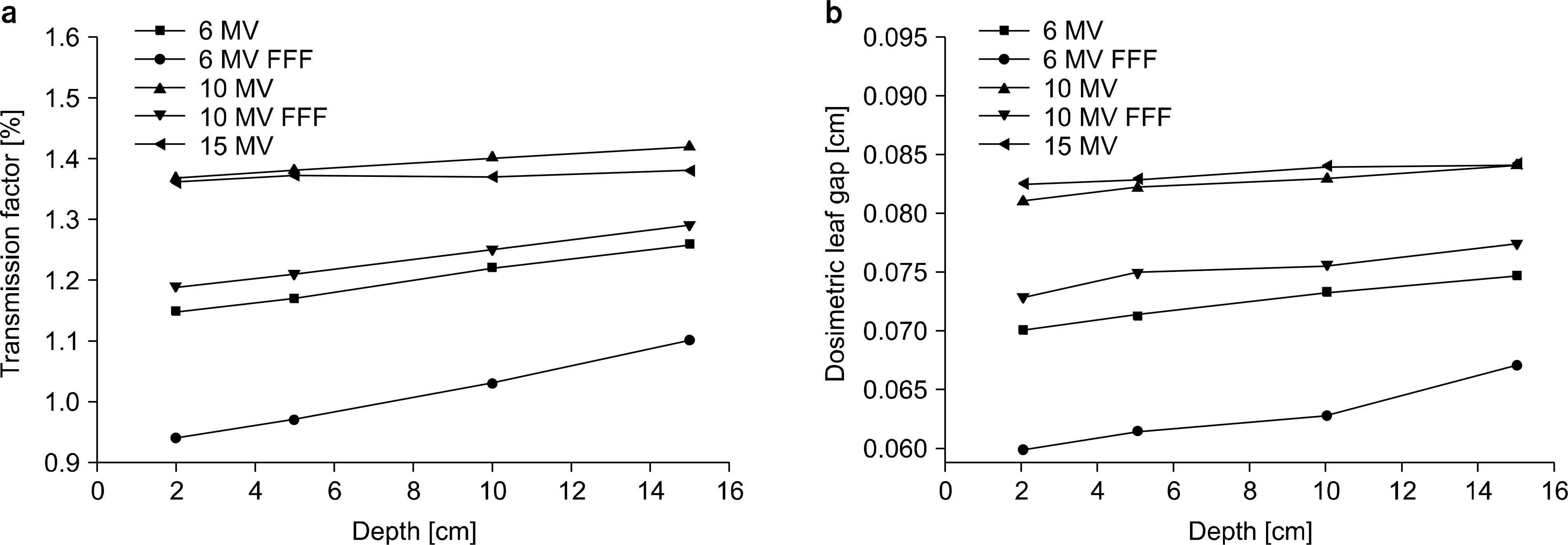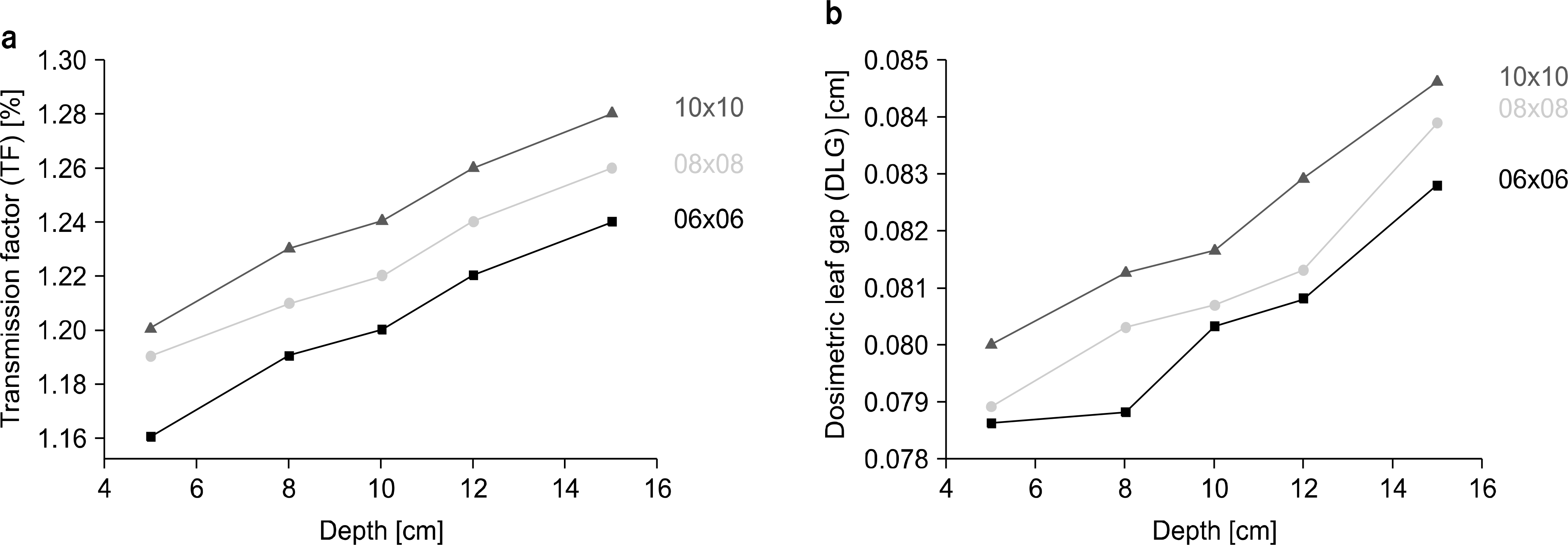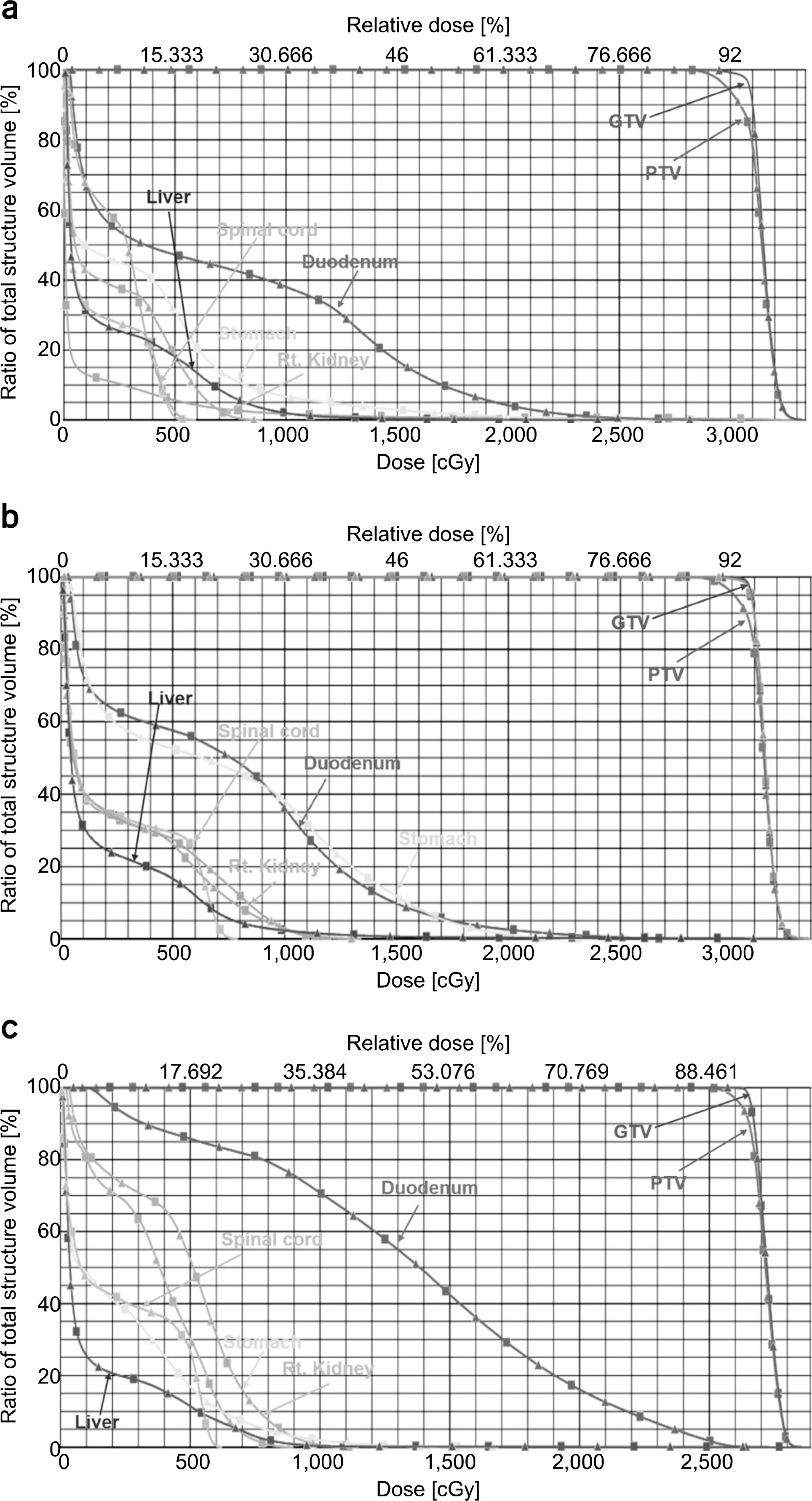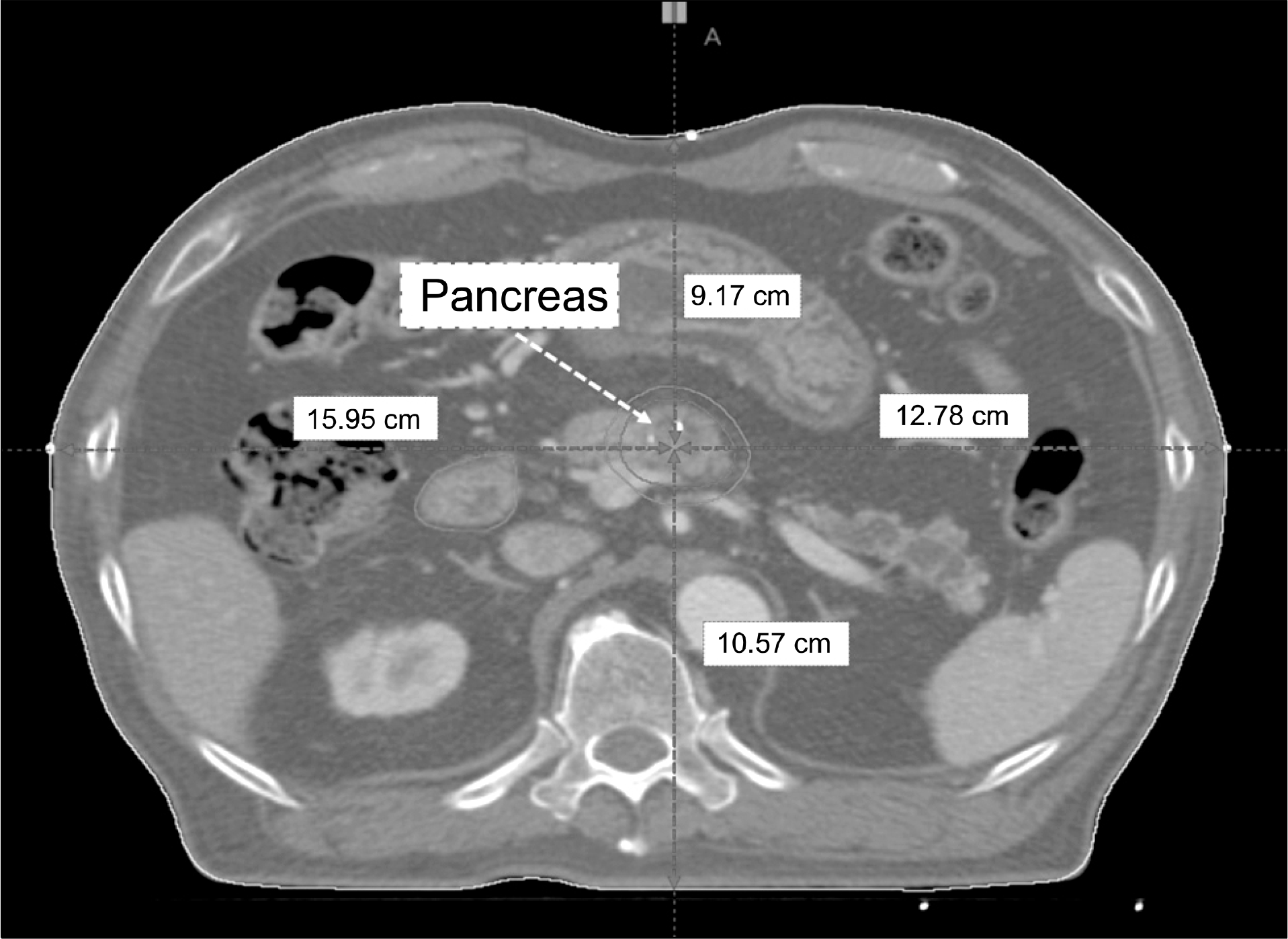Abstract
This study is to evaluate the dosimetric impact of dosimetric leaf gap (DLG) and transmission factor (TF) at different measurement depths and field sizes for high definition multileaf collimator (HD MLC). Consequently, its clinical implication on dose calculation of treatment planning system was also investigated for pancreas stereotactic body radiation therapy (SBRT). The TF and DLG were measured at various depths (5, 8, 10, 12, and 15 cm) and field sizes (6×6, 8×8, and 10×10 cm2) for various energies (6 MV, 6 MV FFF, 10 MV, 10 MV flattening filter free [FFF], and 15 MV). Fifteen pancreatic SBRT cases were enrolled in the study. For each case, the dose distribution was recomputed using a reconfigured beam model of which TF and DLG was the closest to the patient geometry, and then compared to the original plan using the results of dose-volume histograms (DVH). For 10 MV FFF photon beam, its maximum difference between 2 cm and 15 cm was within 0.9% and it is increased by 0.05% from 6×6 cm2 to 10×10 cm2 for depth of 15 cm. For 10 MV FFF photon beam, the difference in DLG between the depth of 5 cm and 15 cm is within 0.005 cm for all field sizes and its maximum difference between field size of 6×6 cm2 and 10×10 cm2 is 0.0025 cm at depth of 8 cm. TF and DLG values were dependent on the depth and field size. However, the dosimetric difference between the original and recomputed doses were found to be within an acceptable range (<0.5%). In conclusion, current beam modeling using single TF and DLG values is enough for accurate dose calculation.
Go to : 
REFERENCES
1.Otto K. Volumetric modulated arc therapy: IMRT in a single gantry arc. Med Phys. 35:310–317. 2008.

2.Xing L., Thorndyke B., Schreibmann E, et al. Overview of image-guided radiation therapy. Med Dosim. 31:91–112. 2006.

3.Yoon SM., Lim YS., Park MJ, et al. Stereotactic body radiation therapy as an alternative treatment for small hepatocellular carcinoma. PLoS One 8: e79854, 1-10. 2013.

4.Kantz S., Söhn M., Troeller A, et al. Impact of MLC properties and IMRT technique in meningioma and head-and-neck treatments. Radiat Oncol 10: 184. 2015.

5.Yu CX., Li XA., Ma L, et al. Clinical implementation of intensity-modulated arc therapy. Int J Radiat Oncol Biol Phys. 53:453–63. 2002.
6.Huq MS., Das IJ., Steinberg T., Galvin JM. A dosimetric comparison of various multileaf collimators. Phys Med Biol. 47:N159–70. 2002.

7.Hong CS., Ju SG., Kim M, et al. Dosimetric effects of multileaf collimator leaf width on intensity-modulated radiotherapy for head and neck cancer. Med Phys 41: 021712. 2014.

8.Sharma DS., Dongre PM., Mhatre V., Heigrujam M. Physical and dosimetric characteristic of high-definition multileaf collimator (HDMLC) for SRS and IMRT. J Appl Clin Med Phys. 12:3475. 2011.

9.LoSasso T., Chui CS., Ling CC. Physical and dosimetric aspects of a multileaf collimation system used in the dynamic mode for implementing intensity modulated radiotherapy. Med Phys. 25:1919–27. 1999.

10.Kumaraswamy LK., Schmitt JD., Bailey DW, et al. Spatial variation of dosimetric leaf gap and its impact on dose delivery. Med Phys 41: 111711. 2014.

11.Kielar KN., Mok E., Hsu A., Wang L., Luxton G. Verification of dosimetric accuracy on the TrueBeamSTx: rounded leaf effect of the high definition MLC. Med Phys. 39:6360–71. 2012.
12.Yao W., Farr JB. Determining the optimal dosimetric leaf gap setting for rounded leaf-end multileaf collimator systems by simple test fields. J Appl Clin Med Phys. 16(4):5321. 2015.

13.Szpala S., Cao F., Kohli K. On using the dosimetric leaf gap to model the rounded leaf ends in VMAT/RapidArc plans. J Appl Clin Med Phys. 15:4484. 2014.

Go to : 
 | Fig. 2Measured transmission factor (a) and dosimetric leaf gap (b) at a field size of 10×10 cm2 at different depths (2, 5, 10, and 15 cm) and with a photon beam energy of 6 MV, 6 MV FFF, 10 MV, 10 MV FFF, and 15 MV. |
 | Fig. 3Measured transmission factor (a) and dosimetric leaf gap (b) with a 10 MV FFF photon beam at different field sizes (6×6, 8×8, and 10×10 cm2) and different depths (5, 10, and 15 cm). |
 | Fig. 4Dose volume histogram (DVH) of original plan (▲) and modified plans (■) for depths 5 cm (a), 8 cm (b), and 10 cm (c). |
Table 1.
Patient characteristics (n=15).
Table 2.
Transmission factor (TF) and dosimetricleaf gap (DLG) at various depths and field sizes with a 10 MV FFF photon beam.




 PDF
PDF ePub
ePub Citation
Citation Print
Print



 XML Download
XML Download